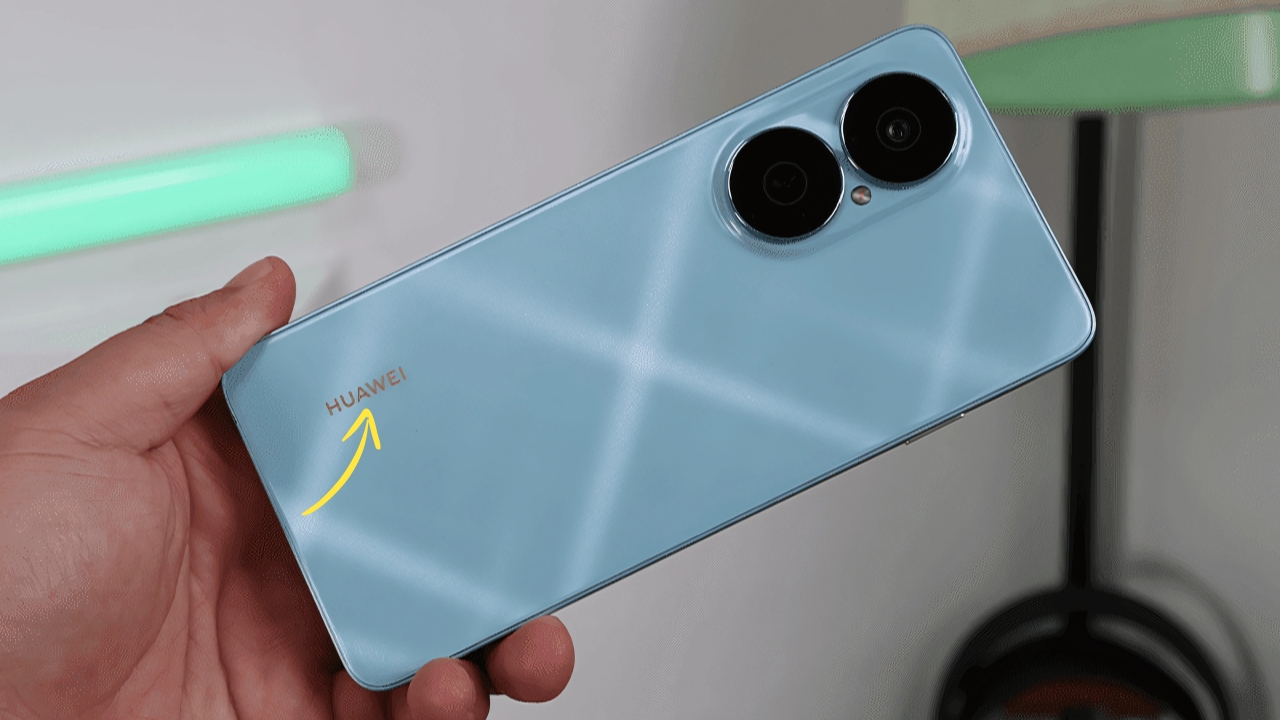Huawei Nova Y73 : Look, I’ve been doing this long enough to expect weird product decisions, but the Huawei Nova Y73 has me genuinely confused. After testing it for weeks since its May 2025 launch, I keep asking myself: who exactly is this phone for? And why does it exist?
Design That Screams “We Gave Up”
The Nova Y73 looks like Huawei’s design team phoned it in completely. Blue and Black color options feel uninspired, while the 203-gram weight and 8.25mm thickness scream budget compromise without any redeeming design flair.
The 6.67-inch display dominates the front, which is the only remotely modern element here. Plastic construction feels adequate for surviving daily drops but won’t win any beauty contests or inspire confidence in long-term durability.
IP64 rating provides basic splash protection, though it’s hardly impressive by 2025 standards. The side-mounted fingerprint sensor works reliably, which counts as one of the few things that actually functions properly.

Display That Belongs in a Museum
Here’s where I started getting genuinely angry. The 6.67-inch LCD panel offers HD+ resolution of 720×1604 pixels. On a screen this large in 2025. The pixelation is immediately obvious, making everything look fuzzy and dated.
The 90Hz refresh rate tries to mask the resolution disaster, and scrolling does feel smoother than 60Hz displays. Peak brightness hits 1,000 nits for decent outdoor use, but the overall experience feels like using a phone from 2019.
Watching YouTube or scrolling Instagram becomes an exercise in tolerating subpar image quality. Text looks blurry, photos appear soft, and the entire visual experience feels genuinely behind the times.
Performance That Defies Logic
The Kirin 710A chipset powering this thing originally launched in 2018. Seven. Years. Ago. In a phone releasing in 2025. I honestly can’t wrap my head around this decision.
Daily performance feels sluggish compared to any modern budget alternative. Apps launch slowly, multitasking causes visible stutters, and even basic tasks like opening the camera occasionally lag.
The 8GB RAM helps somewhat with app switching, but it’s like putting racing stripes on a broken-down car. Gaming performance is genuinely painful – even simple games struggle to maintain playable frame rates.
Camera That Just Gets By
The 50MP rear camera produces acceptable photos in good lighting for social media sharing. Colors look natural enough, detail levels satisfy basic needs, and the f/1.8 aperture helps somewhat in decent conditions.
Low-light performance predictably crumbles, with visible noise and mushy details once the sun goes down. The camera app responds adequately, though image processing takes longer than it should.
The 8MP front camera handles video calls and selfies without embarrassing you. Nothing impressive, just functional enough for daily communication needs.
Battery Life That Almost Redeems Everything
Finally, something that actually works well. The massive 6620mAh battery easily delivers two full days of usage for most people. Heavy users will never worry about charging during the day, while light users might stretch to three days.
40W fast charging gets this enormous battery from dead to 80% in about an hour. Given the massive capacity, that’s reasonable performance that makes the phone actually practical despite everything else.
This battery is legitimately the phone’s only compelling feature – it completely eliminates range anxiety in ways smaller batteries simply can’t match.
Software That Time Forgot
EMUI 12 based on Android 12 feels ancient immediately. Launching with Android 12 in mid-2025 when Android 15 is available shows how disconnected Huawei has become from current reality.
The interface works without major crashes but lacks polish found in contemporary Android implementations. Missing Google services continues limiting functionality for international users expecting full app compatibility.
Build Quality That Does the Minimum
Construction feels solid enough for daily use without inspiring confidence in long-term survival. Materials feel appropriate for the price while making zero attempts at premium touches or thoughtful engineering.
The phone survived my typical abuse without issues, though it doesn’t feel like it would handle serious impacts gracefully.
Connectivity That Covers Basics
Starting storage of 128GB expandable to 256GB covers most users’ needs, though lack of microSD support limits future expansion. Basic connectivity features work reliably without complications.
USB-C port handles charging and data transfer adequately, though it’s limited to USB 2.0 speeds that feel genuinely dated in 2025.
Toyota Fortuner launched with all premium look – features is amazing
Pricing Reality That Doesn’t Add Up
At around $163, the Y73 initially seems competitive until you compare alternatives. For similar money, competitors offer modern processors, higher resolution displays, and current software versions.
The massive battery provides the main selling point, but it’s not enough to overcome significant compromises everywhere else. The value proposition simply doesn’t make sense.
Huawei Nova Y73 Competition That Makes This Pointless
Against budget phones from Xiaomi, Realme, or Samsung, the Y73 looks genuinely obsolete. Competitors deliver better processors, sharper displays, and more recent Android versions at identical prices.
The performance gap becomes obvious immediately, making the Y73 feel like technology from a different era entirely.
The Huawei Nova Y73 represents everything wrong with Huawei’s current smartphone strategy. Unless battery life matters more than everything else combined, countless better alternatives exist at similar prices.
